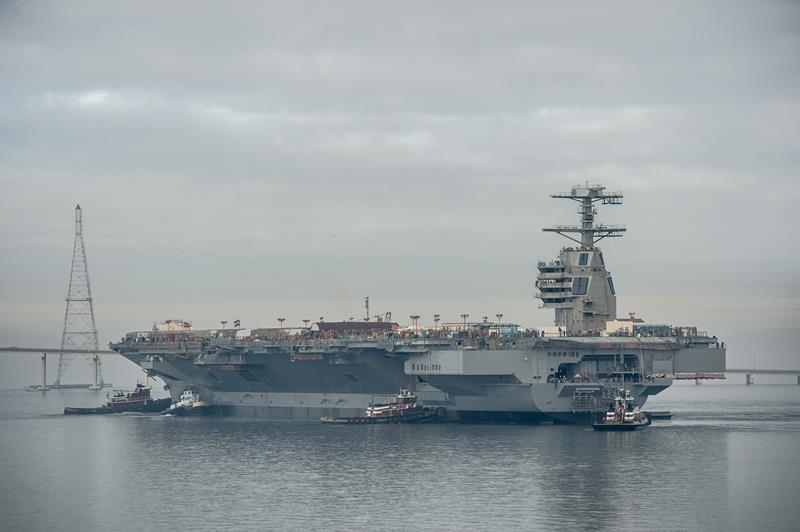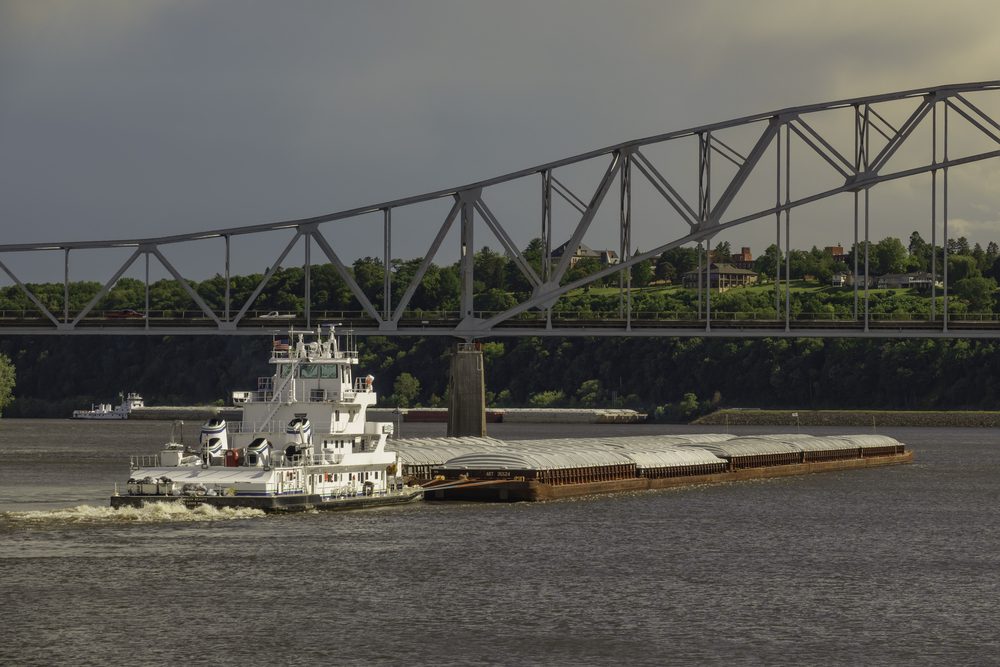Gerald R. Ford (CVN-78) float out at Huntington Ingalls shipyard in November 2013. Photo by Chris Oxley
By Tony Capaccio
(Bloomberg) — The second aircraft carrier in the Navy’s new Gerald R. Ford class is now estimated to exceed a cap imposed by Congress by at least $370 million, according to the Pentagon’s independent cost office.
The working estimate for the USS John F. Kennedy is about $11.868 billion as of late last month, which would violate the congressionally mandated cap of $11.498 billion, according to data reviewed by Bloomberg News. The estimate isn’t final because the office is awaiting additional Navy information to verify the costs of research and military construction.
The latest estimate will invite more scrutiny from lawmakers of the increasing costs and delays in the Navy’s $42.8 billion program for three carriers being built by Huntington Ingalls Industries Inc. The Senate Armed Services Committee’s version of the annual defense authorization bill would direct the Government Accountability Office to review the Navy’s history of cost estimates for the ships.
“Accountability must be restored to the Ford-class aircraft carrier program,” Republican Senator John McCain of Arizona, the committee’s chairman, said in an e-mailed statement in response to the new cost estimate. “Our nation simply cannot afford these kinds of cost overruns amid rising global threats and fiscal challenges.”
Paying for Increase
McCain, who has long complained about runaway weapons costs, called on the Pentagon to identify “who is responsible for this cost overrun and what will be done to hold those individuals accountable.”
The Navy would have to pay for the increase, either by reducing some of the Kennedy’s planned capabilities or requesting that Congress increase the cap lawmakers imposed to contain costs, according to information presented at an April 28 Pentagon meeting.
Frank Kendall, the Defense Department’s chief weapons buyer, is weighing the Cost Assessment and Program Evaluation office’s new estimate that the carrier will cost 3.2 percent more than the congressional cap as part of a decision on approving a construction contract for the Kennedy valued at as much as $4 billion.
Maureen Schumann, Kendall’s spokeswoman, declined in an e- mail to discuss any aspect of his pending decision, including the cost estimate.
Beci Brenton, a spokeswoman for Newport News, Virginia- based Huntington Ingalls, said in an e-mail that the company expects a contract by June 30.
Construction, Engineering
The cost office estimates that the Navy will spend at least $7.788 billion on construction, including engineering and production labor and changes. The Navy’s estimate, completed last month, is $7.542 billion for that work.
Remaining expenses bringing the projected cost to $11.868 billion include equipment such as the catapult and arresting system and radar, which are supplied by the government through contractors other than Huntington.
The new estimate is a setback for the Navy, which undertook an intensive effort to reduce cost estimates for the second carrier after the first one, the Gerald R. Ford, increased 22 percent since 2010 to about $12.88 billion. It’s set for delivery in March 2016.
In an effort to put more pressure on the Navy to keep costs under control, the Senate panel last week directed in its authorization bill, S. 1118, that the cap be lowered by an additional $100 million. The version of the annual policy bill the House passed last week, H.R. 1735, doesn’t include a tighter cap for the Kennedy, or CVN-79, which is the Navy’s designation for a nuclear-powered aircraft carrier.
“We do not discuss pending legislation, however controlling and improving CVN-79’s cost is of highest priority to the Navy,” Commander Thurraya Kent, a Navy spokeswoman, said in an e-mail. “The Navy is committed to maintaining the cost of CVN-79 within the congressional cost cap of $11.498B.”
Shock Tests
In another setback for the Navy, the Senate panel provided the service with $79.1 million for “full ship shock trials” on the Ford. The survival test conducted at sea is intended to assess how well a vessel stands up to underwater shocks.
McCain and Senator Jack Reed of Rhode Island, the committee’s top Democrat, wrote Kendall last month pressing for the testing. They supported a recommendation by the Pentagon test office. The service, which says the test would delay the ship’s deployment by six months, wants to conduct it later on the Kennedy.
©2015 Bloomberg News

 Join The Club
Join The Club











